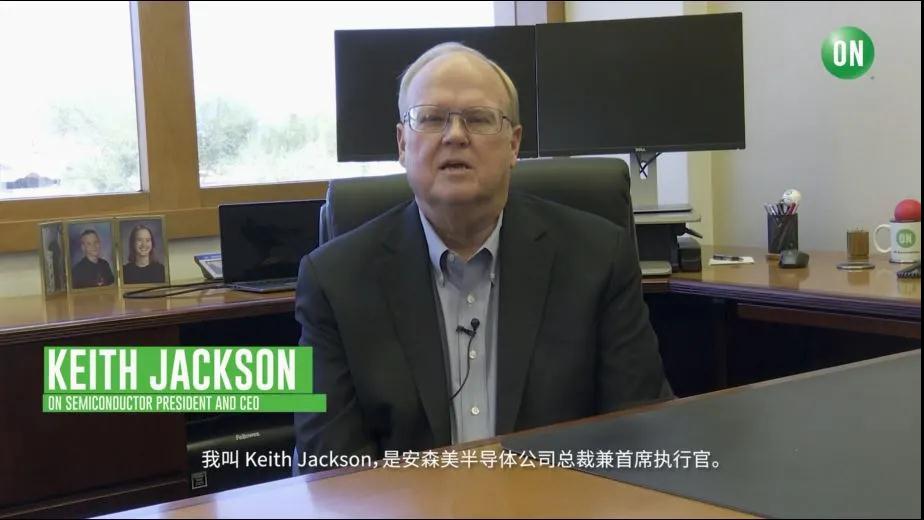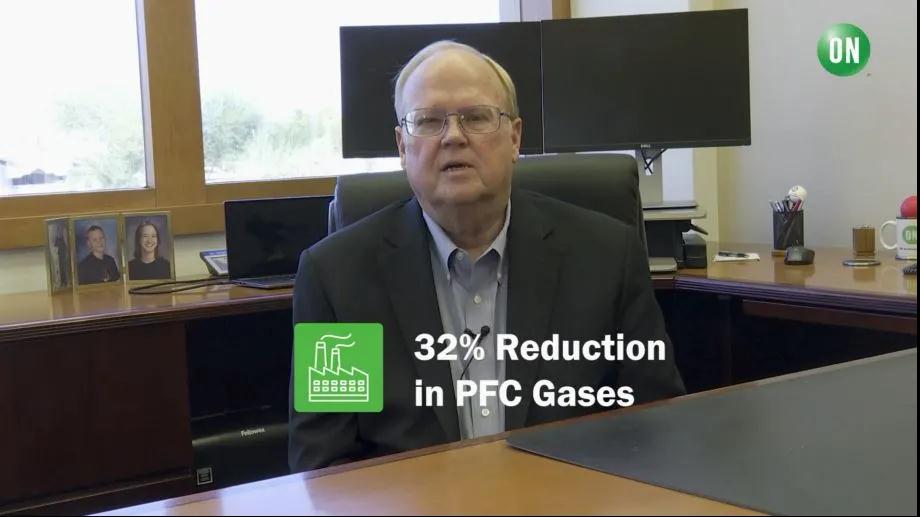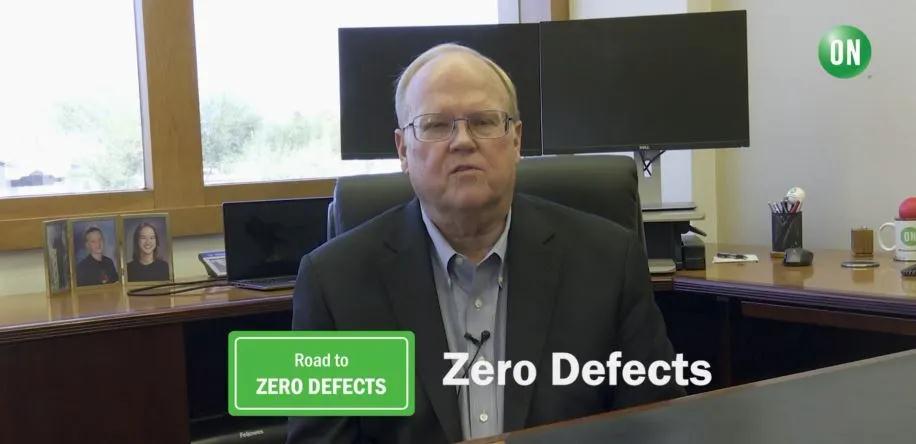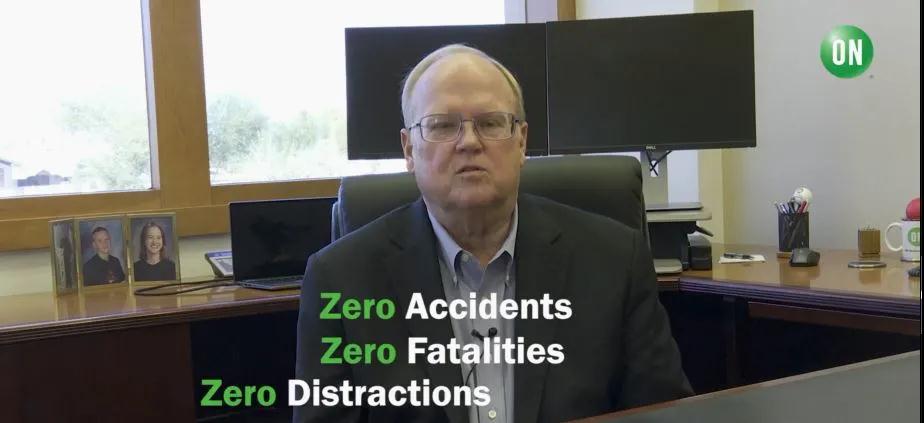Service hotline
+86 0755-83044319
release time:2022-03-08Author source:SlkorBrowse:11706
 安森美半导体首席执行官Keith Jackson
安森美半导体首席执行官Keith Jackson
"This global epidemic has caused huge turbulence to the economy and society. During this period, various industries around the world have adjusted their business models to a certain extent." He said that although people think about the epidemic, the first thing that comes to mind is affirmation. Not semiconductors, but semiconductors do play a very important role in helping humans fight viruses.
Importance of semiconductor industry to epidemic prevention
When the COVID-19 outbreak first started earlier this year, the focus was on making sure factories don’t shut down so that essential goods can be shipped in time to the markets they need. The semiconductor supply chain is highly globalized, extremely complex, and closely connected. Although the epidemic has had a great impact on the supply chain and changed the global electronics industry pattern, at the beginning of the outbreak, hundreds of semiconductor companies were represented. Companies and 10 industry associations in the supply chain have appealed to their countries to prioritize the semiconductor business when formulating public health measures to deal with the outbreak.
Signatories to the statement include semiconductor industry associations in China, the European Union, Japan, South Korea, the United States and Singapore, as well as organizations representing the semiconductor and electronics industries in Malaysia and the Philippines. They asked the government to designate semiconductor and corresponding supply chain operations as "essential technical facilities" and/or "essential operations" to ensure business continuity while the government imposes lockdowns, stay-at-home orders and other measures to limit the movement of people.
The far-reaching impact of these global announcements has come as the semiconductor industry has for nearly a year demonstrated the need for continued operations and the ability to keep critical infrastructure running during the COVID-19 pandemic.
"It is semiconductors that accelerate our progress toward a cure and help people cope with COVID-19, now and in the future." Keith said that ON Semiconductor conducted a test at the beginning of the epidemic, and the results showed that if with a partner Working with suppliers allows you to deliver products to customers around the world in the most strategic way you've never used before.
Specifically, the ventilators that keep patients alive, the diagnostic equipment that tests samples for the presence of the virus, and ultrasound, PET scanners, and other imaging devices that help doctors understand what's going on inside a patient's body, all require semiconductors to operate. ;
High-performance computing and artificial intelligence also help researchers screen potentially effective drugs, and only potentially effective drugs can enter the wet laboratory (EETC editor: Wet Lab is a scientific concept, as opposed to "Dry Lab") Compared with the dry laboratory, the wet laboratory needs to use more chemical reagents when conducting experiments, hence the name. In contrast, the dry laboratory focuses on calculation through various instruments to summarize the experimental materials physical model);
Semiconductor solutions keep the grid overloaded, while also allowing sensors and communications equipment to help collect data, connect society, and buy us critical time;
In addition, social distancing public health measures such as online learning, working from home, and even efficient food delivery services are also being achieved thanks to emerging technologies powered by semiconductors.
Semiconductors make the "impossible" a "possible"
The accelerated adoption of 5G and Wi-Fi 6 technologies has and will continue to play a huge role in building a resilient society, at a time when virtual connectivity is more important than ever to reduce the spread of epidemics caused by crowded gatherings – precisely because of semiconductors , virtual connection is possible.
Keith is also pleased with the Chinese government's efforts to encourage foreign companies to provide relevant solutions to Chinese customers, including the vast majority of customers in rural areas where network connection speeds are currently unsatisfactory.
The arrival of 5G networks can provide gateways for a large number of sensors to upload massive amounts of data. With its low latency, high bandwidth, and ultra-reliable connections, unprecedented and unexpected applications will become a reality—and it’s semiconductors that make 5G a reality.
Much of the data that 5G transmits will end up in the cloud, where servers and algorithms can use it to optimize our world—and all of this sensing, transmission, and computation requires power, or semiconductors.
Semiconductors have spawned some of the most prosperous and innovative technologies in the world, and aiding the pandemic is just one of many use cases where it brings many benefits.
The predecessor of ON Semiconductor was the semiconductor business of Motorola Group. After it was split out in 1999, it went public independently.
Over the years, through organic innovation and strategic acquisitions, ON Semiconductor's product portfolio has continued to expand, Keith said. Including the acquisition of AMI Semiconductor in 2008, which gave the company the opportunity to expand into the industrial and automotive sectors; the acquisition of image sensor leader Aptina Imaging in 2014; and the acquisition of Fairchild Semiconductor in 2015, which gave the company access to more low-to-medium solutions for automotive, industrial, telecom, and servers pressure-related capabilities.
Currently, ON Semiconductor provides power, analog, sensor and connectivity solutions for several development areas including automotive, industrial, telecom, server and IoT. As mentioned above, power is required for all high-tech applications, and "we provide complete power conversion systems that provide efficient and reliable solutions for power base stations, radio stations, enterprise servers and large cloud data centers," Keith said.
Actively addressing the challenges posed by climate change
The semiconductor industry can also help the world meet the challenges posed by global climate change. The World Semiconductor Council (WSC) voluntarily agreed in 1999 that PFC gases (EETC Edited by: Perfluorinated Compounds, perfluorinated compounds, a type of global warming used in semiconductor production, will be released over the next 10 years). gas) is reduced by approximately 10%.


"From 2016 to 2020, ON Semiconductor has been committed to reducing our energy consumption and overall carbon footprint by 5%."
Keith said, "Although standard emissions increased last year due to the reduction in unit volume, ON Semiconductor has reduced CO2-equivalent emissions by more than 9,000 metric tons in 35 projects in 4 countries and regions." In the future, the semiconductor industry will To spare no effort to reduce its carbon footprint, not only to reduce PFC gas emissions, to take measures to reduce energy and water consumption, but also to use some solutions to help the whole society reduce carbon emissions. For example, when using solar energy, it is often necessary to use an inverter to convert the DC power generated by the sun into AC power that can be used for power transmission lines. It is estimated that the power generation generated by the solar inverter modules sold by ON Semiconductor is equivalent to 128 Coal-fired power plants provide electricity.
Keith also gave another example, China is currently one of the fastest developing countries in the world for electric vehicles, and silicon carbide (SiC) power solutions can help improve the efficiency of electric vehicles and achieve the goal of environmental sustainability.
Automotive electronics keywords - Zero (zero)
When it comes to ON Semiconductor's automotive electronics, Keith uses one word to describe it - "Zero". The implication is that automotive semiconductors must first have zero defects to ensure the safety of cars on the road (Road to Zero Defects); the second is zero emissions to make the earth cleaner (Zero Emissions). The transportation industry is the main contributor to greenhouse gas emissions, and most of the air pollution in cities comes from this. During the epidemic, due to the reduction of global economic and transportation activities, the improvement of urban air quality is the best example.

However, this state of global blockade will not always exist. If you want to truly reduce carbon emissions, improve vehicle efficiency, and reduce dependence on yes, the key lies in vehicle electrification technology.
New energy-saving innovations in third-generation semiconductors such as SiC and Gallium Nitride (GaN) enable the use of a variety of new components in vehicle electrification and power management that operate at high voltages and meet new automotive industry standards . This type of automotive system not only increases the number of power chips that can operate at 12-200V voltage levels, but also withstands the harsh external environment in which the vehicle operates.
According to WHO statistics, road traffic accidents are the eighth leading cause of death and the leading cause of death for children aged 5-15 and young people aged 5-29. "They are the pillars of the future society and country, so there is a lot of talk about the 'zero' of automotive electronics." Keith said - Zero Accident (Zero Accident, Zero Fatalities and Zero Distraction) (Zero Distractions), and at the heart of achieving these goals are ADAS or autonomous vehicles.

By using ADAS, the accident rate can be reduced by 28%, and the core of these auxiliary systems is the image sensor. Last year, ON Semiconductor announced that it had shipped more than 100 million 1.2-megapixel image sensors for driver assistance applications.
Using a calculation based on the number of image sensors the company sells each year and the number of accidents that could be avoided, Keith found that "ON Semiconductor's image sensors save nine lives per hour, or 81,000 lives per year."

"We're proud of that number," he said. "But it's not enough, the semiconductor industry should come together and do better in the direction of 'zero'." For example, engineers use this technology in vehicles, with the purpose of It's about enabling vehicles to see, hear, and feel road conditions, changing the relationship between the car and the driver, making that relationship stronger, safer, and more efficient.
It is the global nature of the semiconductor industry that makes such progress possible.
Only cooperation can innovate, only innovation can change the world
In November 2019, Keith began to serve as the chairman of SIA (Semiconductor Industry Association). At that time, they predicted that 2020 must be a crucial year for the semiconductor industry.
Since the beginning of the trade war between China and the United States in 2019, the SIA has been seeking ways to solve serious problems in global economic relations and strive to increase win-win cooperation. For example, by negotiating, identifying solutions that can ease global trade tensions, ensuring an open and inclusive market environment, promoting innovation including enhancing the potential of intellectual property rights, restoring trust in the global trade environment, and encouraging policy makers to adopt Exchange cooperation to resolve potential trade disputes, improve the resilience of the global semiconductor ecosystem, and advance policies that help the semiconductor industry grow and innovate.
"Semiconductor is a global industry, and no single country can provide the entire industry supply chain alone." Keith emphasized, "I have been in this industry, and I have seen and experienced how the industry changes the world." Suppliers, Customers come from all over the world, so keeping the market open is critical. Furthermore, the real driving force comes from innovation and innovative talent.
Semiconductor talents are also spread all over the world. Semiconductor companies set the pace of innovation through strong investment in research and development, and also need the participation of elite talents from all over the world. Keith believes that it is important to let the layman know that it is the contributions of semiconductors that solve society's toughest problems, so that the industry can be successful in attracting, recruiting and retaining talent from all over the world.
When it comes to the current state of the semiconductor industry, Keith believes there is still a lot of innovation left unfinished. Even if Moore's Law continues to face more challenges, there is still a lot of room for improvement in technologies such as materials, heterogeneous integration, artificial intelligence, and quantum computing. These advances and challenges will continue to drive the development of the entire automotive industry. The semiconductor industry thrives in global markets and relies on global supply chains, so the entire industry must focus on open trade and innovation in order to succeed, which is a prerequisite for all semiconductor users to continue to enjoy the benefits of the technology. Although companies in the industry compete with each other, sometimes fiercely, "we all share a vision that this amazing industry can be next year, 10 years or even 50 years from now, in a way unimaginable today. Ways to improve the lives of people around the world.” Keith concluded, “Through innovation, not only can we greatly improve human surveillance, improve the economic conditions of all people, but also make today’s world safer and tomorrow’s world greener. For the benefit of future generations.”
Note: This article is reproduced from the Internet to support the protection of intellectual property rights. Please indicate the original source and author of the reprint. If there is any infringement, please contact us to delete it.









Site Map | 萨科微 | 金航标 | Slkor | Kinghelm
RU | FR | DE | IT | ES | PT | JA | KO | AR | TR | TH | MS | VI | MG | FA | ZH-TW | HR | BG | SD| GD | SN | SM | PS | LB | KY | KU | HAW | CO | AM | UZ | TG | SU | ST | ML | KK | NY | ZU | YO | TE | TA | SO| PA| NE | MN | MI | LA | LO | KM | KN
| JW | IG | HMN | HA | EO | CEB | BS | BN | UR | HT | KA | EU | AZ | HY | YI |MK | IS | BE | CY | GA | SW | SV | AF | FA | TR | TH | MT | HU | GL | ET | NL | DA | CS | FI | EL | HI | NO | PL | RO | CA | TL | IW | LV | ID | LT | SR | SQ | SL | UK
Copyright ©2015-2025 Shenzhen Slkor Micro Semicon Co., Ltd